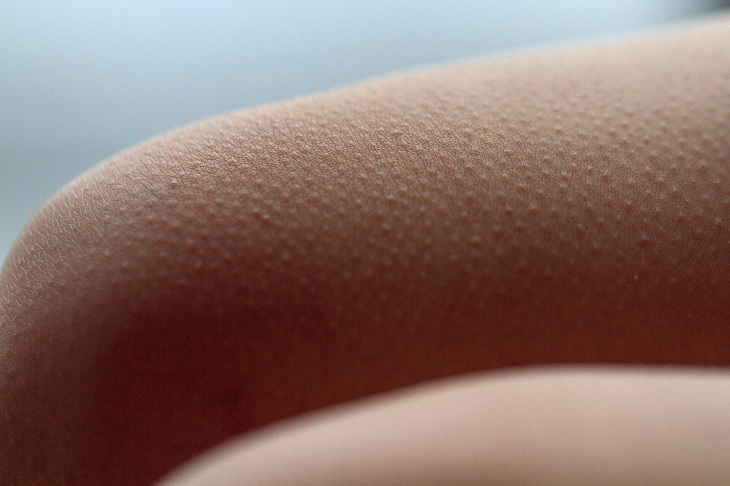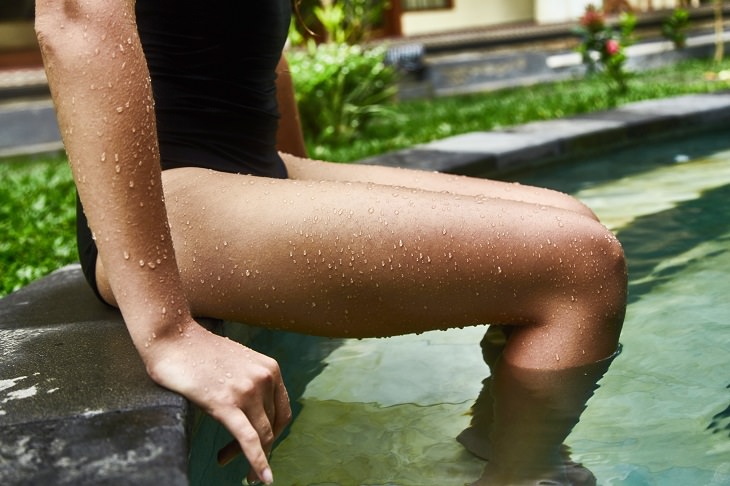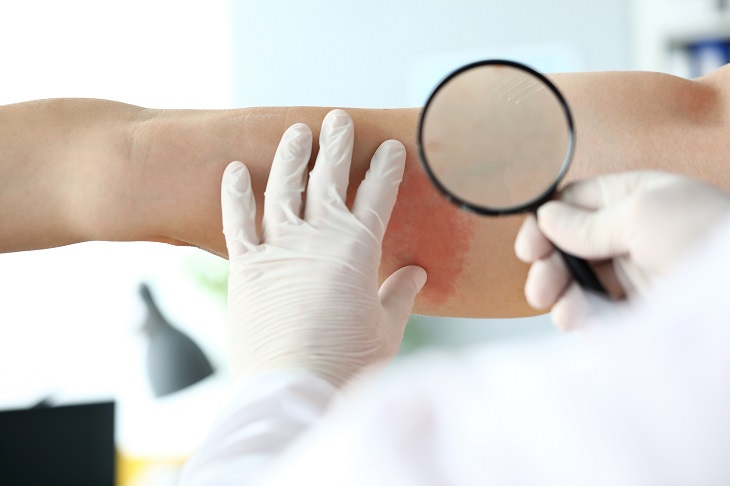What You Need to Know About Treating Keratosis Pilaris
Keratosis Pilaris is an extremely common skin condition that presents in a series of red bumps on the skin, typically
concentrated on the backs of the arms or thighs. While this ailment is
relatively harmless, it can cause occasional itching and discomfort on
rare occasions, as well as skin discoloration. However, more often than
not, it can be an extremely irksome condition due to its unappealing
cosmetic effects. It looks plain terrible and feels so uncomfortable.
The good thing is, there are simple and easy treatments that will help
you get rid of keratosis pilaris, which is exactly what we'll be
discussing below.
What is Keratosis Pilaris?

This ailment presents itself in the form of small bumps on the skin, some of which may be red and black. They are simply small plugs of dead skin clogging the pores and are commonly mistaken for more serious ailments like eczema. They heavily resemble goosebumps or blackheads and sometimes can even be mistaken for pimples. They are most commonly found on the arms and thighs, and in children, they can also occur on the cheeks. Keratosis pilaris doesn’t necessarily require treatment, but it can be bothersome, which is why many make attempts to treat the condition.
Here are a few things you can keep in mind when attempting to treat this ailment.
1. Moisturize

A major cause of these bumps is dryness, so keeping your arms and legs moisturized well can play a big role in reducing the number of these bumps, though it may not clear up the condition entirely. Doctors typically prescribe moisturizers containing ingredients like urea and lactic acid, both of which can treat itchiness and dryness caused by keratosis pilaris.
2. How Often Should You Moisturize?

In cases where the bumps are extremely persistent, doctors advise applying moisturizer after every shower or bath, within five minutes after getting out of the shower or bath, before you are fully dried, and to continue applying it two to three times a day every day, particularly in dry seasons.
3. Seasonal Outbursts

If you live in particularly dry and cold climates, you may find that these bumps generally tend to appear during the winter seasons and clear up during the summer. Also, excessive time in water, such as frequent trips to the beach and swimming pools, may also result in increased dryness and cause a flareup of Keratosis Pilaris.
4. Exfoliation

As is the case with many mild skin conditions, proper exfoliation can make a huge difference. However, because the skin in the affected areas is so sensitive, dermatologists advise staying away from physical exfoliants, such as scrubs and loofahs. Instead, it's best to stick to chemical exfoliation using creams and in shower treatments that contain alpha-hydroxy acids (AHAs). If the condition persists after using over the counter products, you can ask your dermatologist to prescribe a medication with AHAs (lactic, glycolic or mandelic acids) or retinoids (e.g. adapalene, tazarotene, retinol, and tretinoin).
5. Give It Time

As this ailment affects the deeper layers of the skin, it will take time for any medication, ointment or moisturizer to take effect. It will take a minimum of 4-6 weeks before even minor results may be seen on your skin, though for prescribed medications, the time frame is to be specified by the prescribing dermatologists. Only if the condition persists after 6-8 weeks of application of any concerned medication should more drastic options be considered. For some people, this condition may naturally reverse itself over time as well.
6. Laser Removal
While it is not advisable in mild cases, if the condition persists for a prolonged period of time and causes bouts of discomfort, itchiness, dryness or anything of that sort, and medications have failed to have the desired effect, you can speak to your doctor about laser therapy to reduce the swelling and the redness, as well as improve the color of your skin, depending on the effects of the condition you wish to reverse.
this is only for your information, kindly take the advice of your doctor for medicines, exercises and so on.
https://gscrochetdesigns.blogspot.com. one can see my crochet creations
https://gseasyrecipes.blogspot.com. feel free to view for easy, simple and healthy recipes
https://kneereplacement-stickclub.blogspot.com. for info on knee replacement
What is Keratosis Pilaris?

This ailment presents itself in the form of small bumps on the skin, some of which may be red and black. They are simply small plugs of dead skin clogging the pores and are commonly mistaken for more serious ailments like eczema. They heavily resemble goosebumps or blackheads and sometimes can even be mistaken for pimples. They are most commonly found on the arms and thighs, and in children, they can also occur on the cheeks. Keratosis pilaris doesn’t necessarily require treatment, but it can be bothersome, which is why many make attempts to treat the condition.
Here are a few things you can keep in mind when attempting to treat this ailment.
1. Moisturize

A major cause of these bumps is dryness, so keeping your arms and legs moisturized well can play a big role in reducing the number of these bumps, though it may not clear up the condition entirely. Doctors typically prescribe moisturizers containing ingredients like urea and lactic acid, both of which can treat itchiness and dryness caused by keratosis pilaris.
2. How Often Should You Moisturize?

In cases where the bumps are extremely persistent, doctors advise applying moisturizer after every shower or bath, within five minutes after getting out of the shower or bath, before you are fully dried, and to continue applying it two to three times a day every day, particularly in dry seasons.
3. Seasonal Outbursts

If you live in particularly dry and cold climates, you may find that these bumps generally tend to appear during the winter seasons and clear up during the summer. Also, excessive time in water, such as frequent trips to the beach and swimming pools, may also result in increased dryness and cause a flareup of Keratosis Pilaris.
4. Exfoliation

As is the case with many mild skin conditions, proper exfoliation can make a huge difference. However, because the skin in the affected areas is so sensitive, dermatologists advise staying away from physical exfoliants, such as scrubs and loofahs. Instead, it's best to stick to chemical exfoliation using creams and in shower treatments that contain alpha-hydroxy acids (AHAs). If the condition persists after using over the counter products, you can ask your dermatologist to prescribe a medication with AHAs (lactic, glycolic or mandelic acids) or retinoids (e.g. adapalene, tazarotene, retinol, and tretinoin).
5. Give It Time

As this ailment affects the deeper layers of the skin, it will take time for any medication, ointment or moisturizer to take effect. It will take a minimum of 4-6 weeks before even minor results may be seen on your skin, though for prescribed medications, the time frame is to be specified by the prescribing dermatologists. Only if the condition persists after 6-8 weeks of application of any concerned medication should more drastic options be considered. For some people, this condition may naturally reverse itself over time as well.
6. Laser Removal
While it is not advisable in mild cases, if the condition persists for a prolonged period of time and causes bouts of discomfort, itchiness, dryness or anything of that sort, and medications have failed to have the desired effect, you can speak to your doctor about laser therapy to reduce the swelling and the redness, as well as improve the color of your skin, depending on the effects of the condition you wish to reverse.
this is only for your information, kindly take the advice of your doctor for medicines, exercises and so on.
https://gscrochetdesigns.blogspot.com. one can see my crochet creations
https://gseasyrecipes.blogspot.com. feel free to view for easy, simple and healthy recipes
https://kneereplacement-stickclub.blogspot.com. for info on knee replacement
Labels: exfoliation, keratosis pilaris, laser removal, moisturizer, patience, seasonal outbursts, winter

0 Comments:
Post a Comment
<< Home